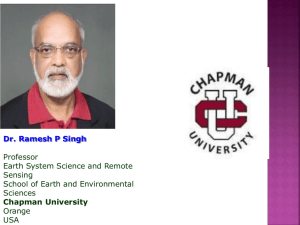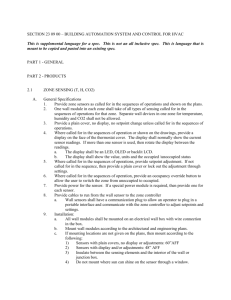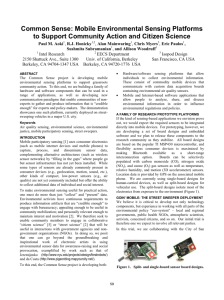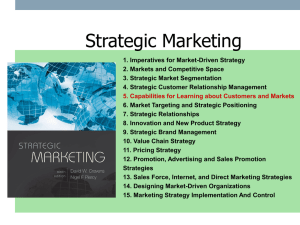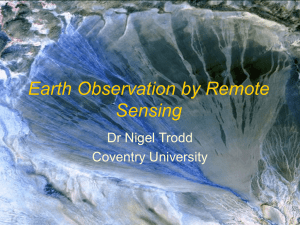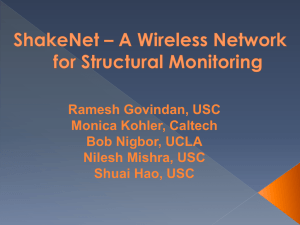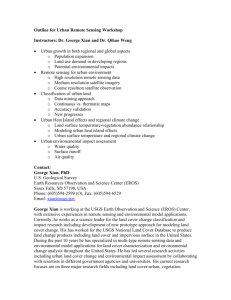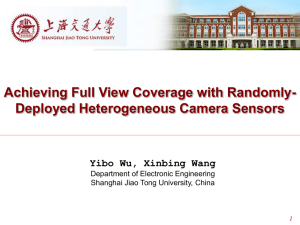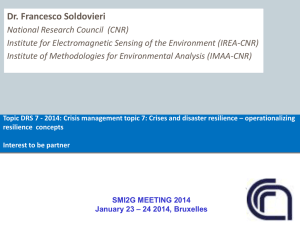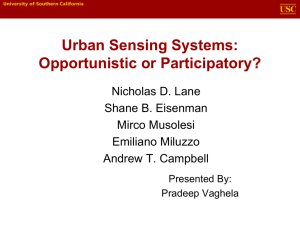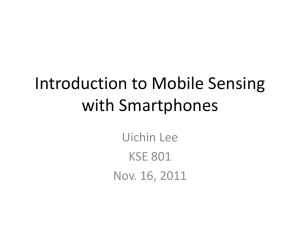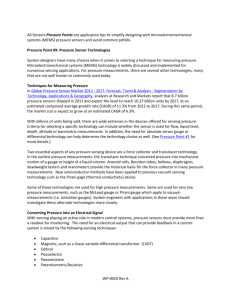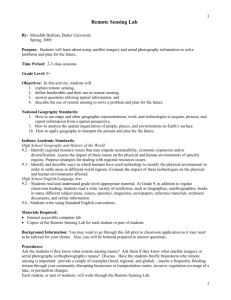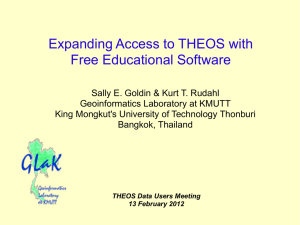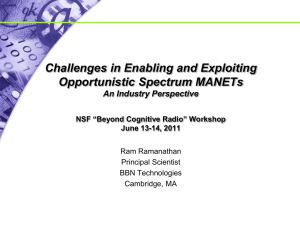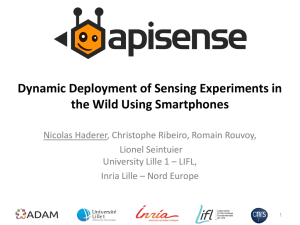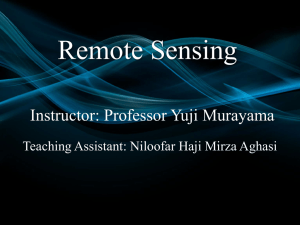talk - Saket Sathe
advertisement
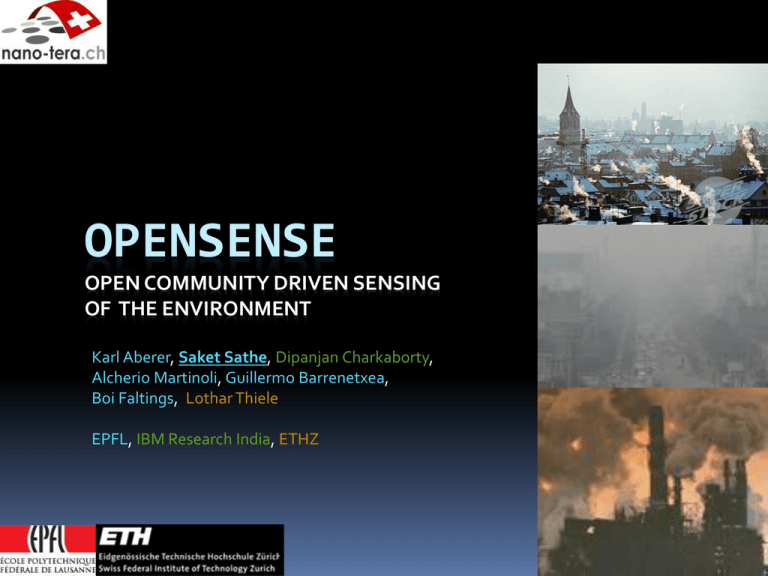
OPENSENSE OPEN COMMUNITY DRIVEN SENSING OF THE ENVIRONMENT Karl Aberer, Saket Sathe, Dipanjan Charkaborty, Alcherio Martinoli, Guillermo Barrenetxea, Boi Faltings, Lothar Thiele EPFL, IBM Research India, ETHZ OpenSense Vision Community driven, large-scale air pollution measurement in urban environments Important problem: Important technical air pollution opportunities and challenges Affects quality of life and Massive measurements that health Urban population increasing Air pollution is highly location-dependent traffic chokepoints industrial installations Few monitoring stations measure pollutants exploit Wireless sensor networks Mobile stations Community involvement More data, more noise, but also more redundancy Can we produce better quality data? Address key challenges in communication and information systems for urban air quality monitoring Basic Sensing Infrastructure Mobile sensor nodes on public transportation and private mobile devices Wireless sensing and communication infrastructure SENSING SYSTEM From many wireless, mobile, heterogeneous, unreliable raw measurements … INFORMATION SYSTEM … to reliable, understandable and Web-accessible real-time information sensor network control optimization of data acquisition mobile nodes interpretation and presentation of data wireless fixed nodes Internet GPRS GPS TERA NANO Overall Goal Users and Deployments Collaboration with ISPM* of University of Basel, SALPADIA First test deployments already made CO, CO2, fine particles, NO2 Deployment in city of Basel Field test in Lausanne Lausanne transport agreed to install sensors on buses *Institute of Social and Preventive Medicine Community Sensing Several small-, micro-, or potentially even nano-scale sensors participating in an open “opt-in” model Advocates microscopic monitoring of the environment Several observations Ownership and participation (private/public sensors) Heterogeneity of equipments Data Sampling (users invest power resources; frequent sampling is infeasible) Mobility: un controlled/ semi controlled Reliability Trust-worthiness Privacy Community sensing faces substantial technical challenges to scale up from isolated, well controlled, small-user-base trials to an open and scalable infrastructure. Towards Sustainable Community Sensing Community sensing networks, in order to be widely deployable and sustainable, need to follow utilitarian approaches towards sensing and data management Unlike traditional environment sensing principles Utilitarian approaches models utility of data being produced and consumed Uses utility to control data production The environment should be spatially and temporally sampled (and visualized) only at the rate necessary, and not necessarily at the rate to reconstruct the underlying phenomenon. Sensor Infrastructure - Private and public sensors - Uncontrolled mobility -Heterogeneous sensors -Unreliable, privacy-sensitive Application, Middleware, Management Infrastructure Sensed Data Basis for decision making Mobile Sensors (Cell phones, vehicle mounted gas sensors, GPS from cars etc) OpenSense Cycle Utility Feedback Incentive for Sensing Decision Making -Application/community demands -Available spatio-temporal distributions, deviations -Error handling -Energy efficiency -Data Management costs -Privacy, trust, reputation Realizing the vision.. 1. Framework needs to consider several dimensions of the geosensory ecosystem to model the utility of data produced and consumed 2. Decentralized control system for utility-driven management of the network Sensing Model Data Management Model Error Handling Model Energy Management Model Privacy and Reputation Model Application Demand Model Management of the Cycle Phases Sense: sensing environmental pollution parameters Transmit: Exchanging data with base stations (communication costs) Store: Efficient storage Query: querying data based on application demands Archive: archiving old/unused data Common entity connecting these layers is data, which moves from sensors to applications Important resources are utilized at every phase Opensense would quantify and track the importance of data at every phase, measuring utility as a function of local factors and dependencies from next layers On going work Deployments Model development Data Management strategies Decentralized decision making and control OpenSense URL http://www.nano-tera.ch/projects/401.php Thank You



